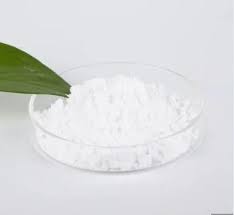Overview of silicified powder:
Metal silicide powder is a ceramic material with excellent heat resistance and oxidation resistance. Even at high temperature, the silicide powder can form a protective film on the surface and maintain good oxidation resistance.
Silicide powder has metallic luster, high hardness and high melting point. Metals or nonmetals can produce various silicides. Metal silicides are widely used due to their excellent high temperature oxidation resistance, electrical conductivity and heat transfer properties.

Application of silicified powder:
Metal silicide powder is widely used because of its excellent high temperature oxidation resistance and electrical conductivity and heat transfer performance.
The high-purity products MoSi2, WSi2 and TaSi2 are important materials for PVD targets for semiconductor-related applications.
Metal silicides can be used for heating elements.
MoSi2 powder is used in high temperature anti-oxidation coatings.
Titanium disilicide and cobalt disilicide are used in integrated circuits.
Silicification powder supplier:
We supply high-purity ultrafine silicide powder, such as aluminum silicide, molybdenum silicide MoSi2 powder, titanium silicide TiSi2 powder, hafnium silicide, manganese silicide, tungsten silicide, nickel silicide, zirconium silicide ZrSi2 powder, cobalt silicide, sodium silicate, potassium silicate, etc. Email us or click the desired product to send an inquiry.

Payment Term:
T/T, Credit Card, Western Union, Paypal etc.
Term for delivery:
By air, courier or by sea according to the needs of the customer.
Conditions of storage:
1.) Maintain a dry area at the temperature of room.
2.) Avoid high and damp temperatures.
3.) Utilize immediately following the opening of the bag inside.
FAQ:
Q1:
What is silicide powder?
Re:Silicide powder has excellent physical and chemical properties, such as high hardness, high wear resistance, high melting point, low expansion coefficient, and so on. These properties make silicide powder have a broad application prospect in many fields. In addition, silicide powder can also be used in aerospace, the electronics industry, optical devices, and other fields.
Titanium silicide is an essential silicide powder, which is a compound formed by the combination of silicon and titanium elements. Titanium silicide powder with high hardness, high melting point, low expansion coefficient, and other properties is widely used in the manufacture of cutting tools, abrasive tools, wear parts, and other fields.
Q2:
What are the uses of silicide powder?
Re:Cutting tools and abrasives manufacturing: silicide powder such as silicon carbide (SiC) with high hardness and high wear resistance can be used to manufacture cutting tools and abrasives, improve the hardness and wear resistance of tools, and extend the service life.
Wear-resistant materials: silicide powder can be used to manufacture various wear-resistant parts, such as grinding balls, grinding disks, grinding rods, etc., to improve the wear resistance and service life of parts.
Ceramics and glass industry: silicide powders can be used to manufacture ceramics and glass to improve the hardness and chemical stability of products.
Electronic and optical industries: silicide powders have high purity, high conductivity, and high light transmittance and can be used to manufacture electronic components, optical lenses, and sensors.
Q3:
What is the high-temperature resistance of silicide powder?
Re:The high-temperature resistance of silicide powder depends on its composition and preparation process. The silicon element in the silicide powder has a high melting point and chemical stability, so the silicide powder usually has an excellent high-temperature resistance. However, the high-temperature resistance of silicide powder with different compositions and preparation processes is also additional. In a high-temperature environment, the silicide powder may undergo oxidation, reduction, and other reactions, resulting in a decline in its performance. Therefore, when using silicide powder, it is necessary to select the appropriate composition and preparation process.
Q4:
What are the common powdered silicides?
Re:Standard powder silicides include iron silicide, cobalt silicide, titanium silicide, zirconium silicide, and so on. These silicide powders have excellent physical and chemical properties, so they are widely used in cutting tools, abrasive tools, wear parts, aerospace, the electronics industry, optical devices, and other fields. These silicide powders can be prepared by physical vapor deposition (PVD), chemical vapor deposition (CVD), mechanical alloying (MA), self-propagating high-temperature synthesis (SHS), and other methods. When using silicide powder, it is necessary to select the appropriate composition and preparation process according to the specific application scenario and requirements to ensure the stability and durability of its performance.
Q5:
What is metal silicide?
Re:Metal silicide refers to the transition metal and silicon generated by complex compounds; its chemical composition is stable, with oxidation resistance. Metal silicides have good oxidation resistance because silicon and oxygen form a dense oxide film, which can prevent oxygen from oxidizing the transition metal at room temperature and high temperature. Metal silicide melting point is not high, the thermal conductivity is high, the thermal shock resistance is good, and the hardness is high, but the brittleness is also significant. Metal silicides are divided into two categories. One is refractory metal silicides, such as titanium silicide, zirconium silicide, tantalum silicide, tungsten silicide, etc. The other is precious metal and near-precious metal silicides, such as palladium silicide, platinum silicide, cobalt silicide, and so on.
Metal silicide technology is widely used in semiconductor processes, such as the equivalent series resistance of polycrystalline silicon gates and gate block resistance up to 36 ohm/sq. The industry uses the double-layer structure of polysilicon and Polycide to replace the polysilicon gate, thereby reducing the block resistance of the polysilicon. The material of Polycide is tungsten silicide, and the resistance of the double layer structure of Polycide is about 3ohm/sq for the thickness of 1K polysilicon and 1.5K Polycide.

